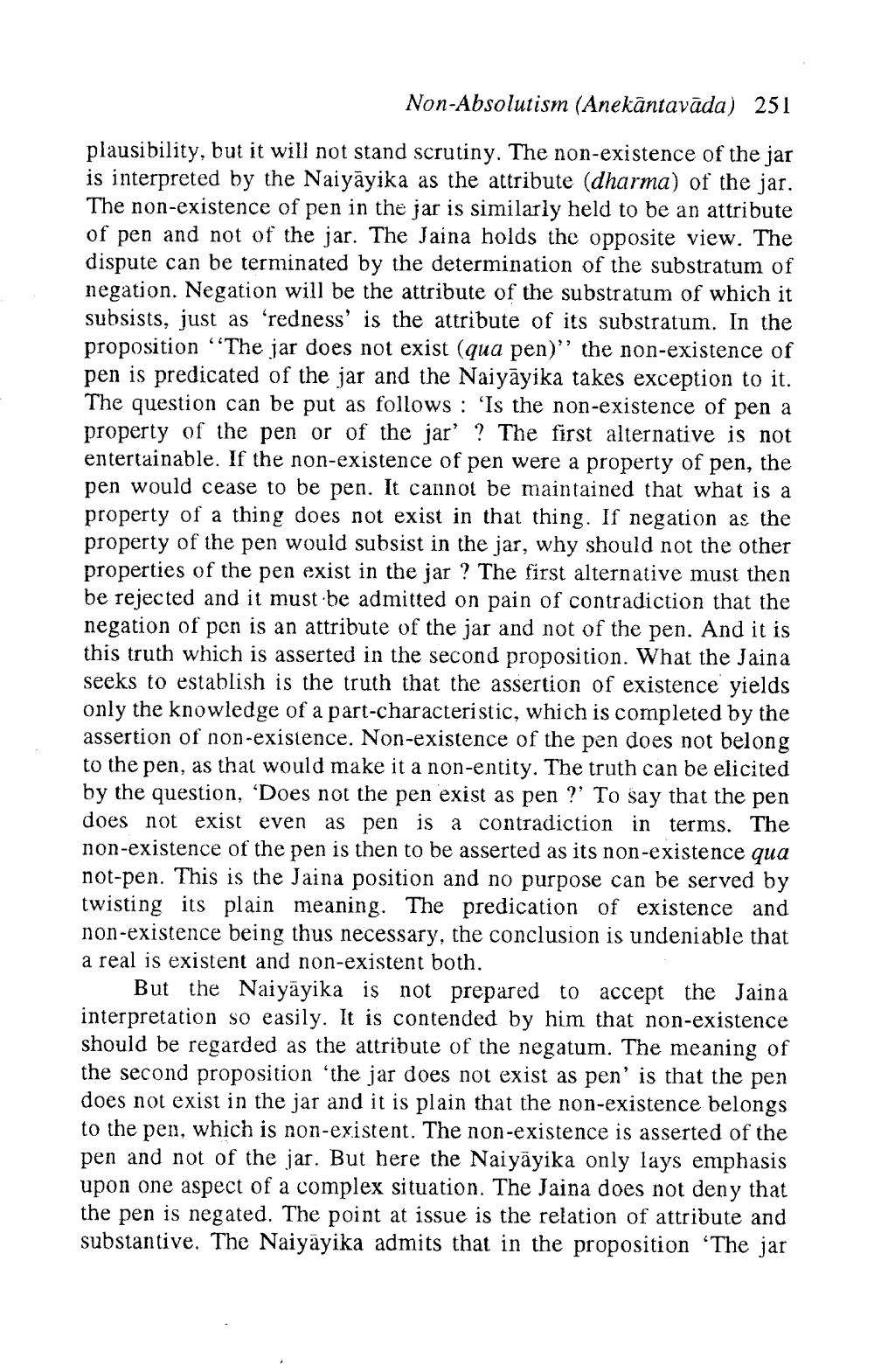________________
Non-Absolutism (Anekantavāda) 251
plausibility, but it will not stand scrutiny. The non-existence of the jar is interpreted by the Naiyāyika as the attribute (dharma) of the jar. The non-existence of pen in the jar is similarly held to be an attribute of pen and not of the jar. The Jaina holds the opposite view. The dispute can be terminated by the determination of the substratum of negation. Negation will be the attribute of the substratum of which it subsists, just as 'redness' is the attribute of its substratum. In the proposition "The jar does not exist (qua pen)" the non-existence of pen is predicated of the jar and the Naiyāyika takes exception to it. The question can be put as follows : 'Is the non-existence of pen a property of the pen or of the jar' ? The first alternative is not entertainable. If the non-existence of pen were a property of pen, the pen would cease to be pen. It cannot be maintained that what is a property of a thing does not exist in that thing. If negation as the property of the pen would subsist in the jar, why should not the other properties of the pen exist in the jar ? The first alternative must then be rejected and it must be admitted on pain of contradiction that the negation of pen is an attribute of the jar and not of the pen. And it is his truth which is asserted in the second proposition. What the Jaina seeks to establish is the truth that the assertion of existence yields only the knowledge of a part-characteristic, which is completed by the assertion of non-existence. Non-existence of the pen does not belong to the pen, as that would make it a non-entity. The truth can be elicited by the question, 'Does not the pen exist as pen ?' To say that the pen does not exist even as pen is a contradiction in terms. The non-existence of the pen is then to be asserted as its non-existence qua not-pen. This is the Jaina position and no purpose can be served by twisting its plain meaning. The predication of existence and non-existence being thus necessary, the conclusion is undeniable that a real is existent and non-existent both.
But the Naiyāyika is not prepared to accept the Jaina interpretation so easily. It is contended by him that non-existence should be regarded as the attribute of the negatum. The meaning of the second proposition 'the jar does not exist as pen' is that the pen does not exist in the jar and it is plain that the non-existence belongs to the pen, which is non-existent. The non-existence is asserted of the pen and not of the jar. But here the Naiyāyika only lays emphasis upon one aspect of a complex situation. The Jaina does not deny that the pen is negated. The point at issue is the relation of attribute and substantive. The Naiyāyika admits that in the proposition ‘The jar




